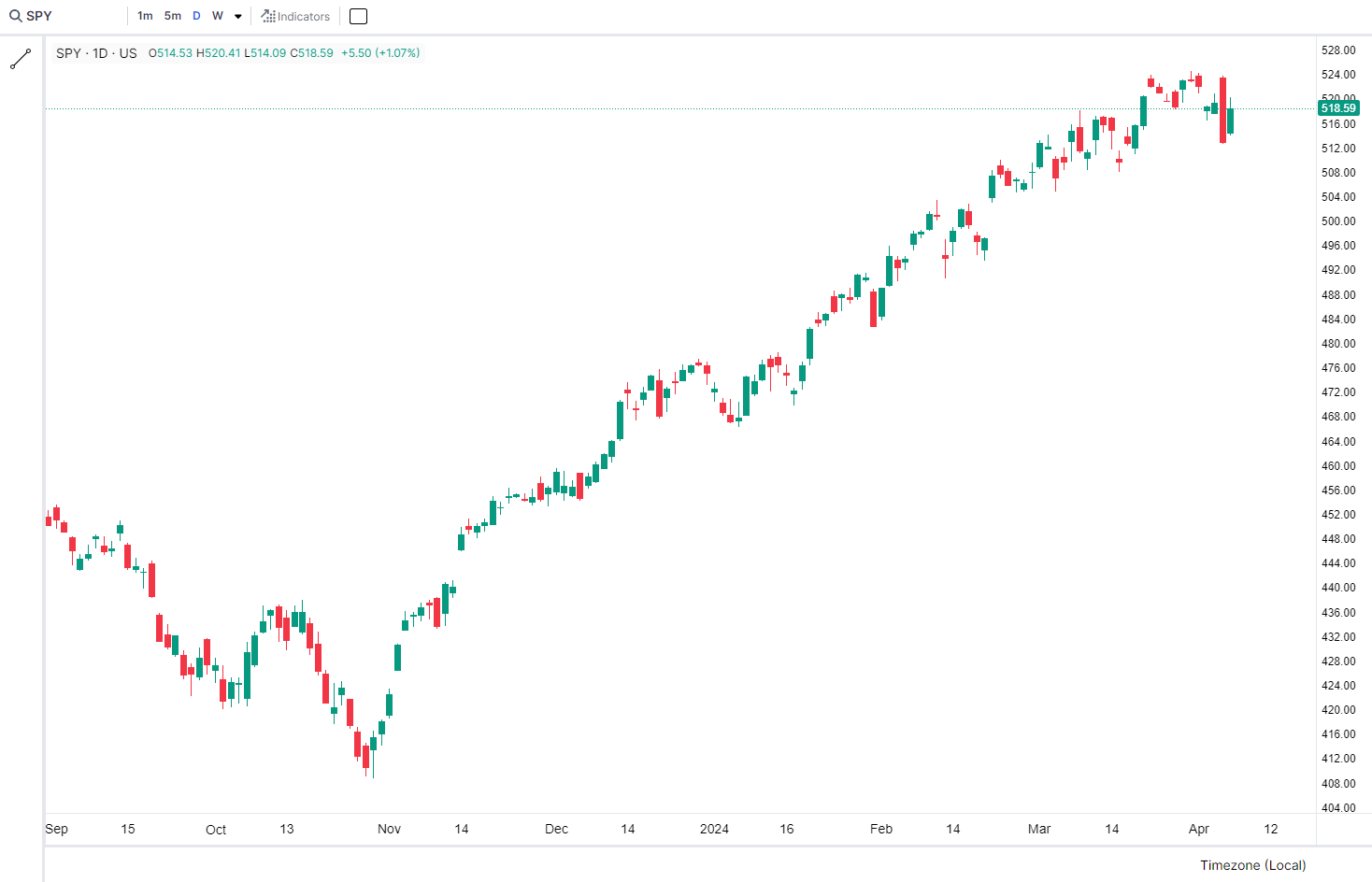Market Swings: A Rollercoaster Week Ends on a High Note
Analyzing the Impact of Surprising U.S. Job Numbers
Last updated: Apr 5, 2024
Author: Nathan Nobert
The stock market experienced a whirlwind of activity this week, with initial drops in major indices due to ongoing economic uncertainties, followed by a significant rebound. The catalyst? Better-than-expected job numbers from the U.S. Bureau of Labor Statistics.
Current market leading stock prices
- VOO:539.14 (-2.94%)
- VTI:290.39 (-3.09%)

Early in the week, investor sentiment wavered as market indicators suggested a downturn. Thursday, April 4th had $SPY down 1.22%. However, the release of the monthly job report showing a robust addition of jobs in the economy spurred a positive turnaround. Here's how these developments have impacted the financial markets and what investors should watch moving forward.
Key Takeaways
- - Unexpectedly strong U.S. job numbers prompt market rebound.
- - Investors reassess risk and opportunity amidst economic uncertainty.
- - Stock market resilience highlights underlying strength in the U.S. economy.
The Initial Shock: Market Reactions to Economic Indicators
Before the release of the recent job numbers, a series of economic indicators hinted at a looming slowdown. This anticipation led to a wave of caution among investors, prompting a retreat from equities and riskier investments. Major stock indices experienced significant declines, fueling speculations about the onset of a bear market that could challenge the resilience of the economic recovery post-pandemic. The air was rife with uncertainty as market participants braced for potentially disappointing news on the employment front.
This period of apprehension underscored the sensitivity of financial markets to pre-release economic forecasts and the potent impact of investor sentiment on market liquidity and stability. The volatility observed in the days leading up to the jobs report highlights the interconnectedness of economic indicators and market psychology, emphasizing the critical role of timely, accurate data in shaping investment strategies.
A Turn for the Better: The Job Report's Silver Lining
Contrary to the gloomy predictions, the employment situation report brought with it a gust of optimism. The addition of over 300,000 jobs far exceeded analysts' expectations, acting as a beacon of resilience and potential growth within the U.S. economy. This unexpected surge in employment not only alleviated fears of a downturn but also injected confidence into the markets, triggering a rebound in stock prices across various sectors.
The ripple effect of this positive development was immediate, with sectors like technology, healthcare, and consumer goods leading the charge in market recovery. Investors, reassured by the strength of the labor market, began to recalibrate their portfolios, leaning towards growth-oriented assets. The swift turnaround in market sentiment underscores the pivotal role of labor market health in guiding investor confidence and economic outlook.
Understanding the Implications of Surging Job Numbers
March's exceptional job growth does more than just signal economic resilience—it sets the stage for a broader discussion about the future of monetary policy and its impact on investment landscapes. With unemployment edging closer to pre-pandemic lows, the conversation inevitably turns to the Federal Reserve's next moves regarding interest rates and inflation management.
This balancing act between fostering employment growth and controlling wage inflation presents a nuanced challenge for policymakers. On one hand, robust job growth encourages consumer spending and economic expansion. On the other, it necessitates a careful approach to prevent overheating and maintain price stability, essential components of sustained economic health.
Diving Deep into Sector-Specific Growth
A closer examination of sector-specific data reveals a complex tapestry of economic recovery and growth dynamics. The standout performance of the education and healthcare sectors not only reflects ongoing demographic trends but also the increasing importance of public health and education in the post-COVID era. Meanwhile, the solid gains in construction and government sectors suggest a continued commitment to infrastructure and public services expansion.
However, the flatlining of manufacturing jobs points to lingering supply chain issues and a need for strategic policy interventions to rejuvenate this crucial sector. As global trade dynamics evolve, addressing these challenges will be paramount in ensuring the manufacturing sector's robustness and its contribution to overall economic growth.
The multifaceted nature of job growth across sectors underscores the importance of diversified investment strategies. As the economic landscape shifts, staying informed and adaptable will be key for investors aiming to capitalize on emerging opportunities while mitigating risks.
As we look to the future, the key will be in monitoring economic reports and market indicators closely. These data points will offer critical insights into the evolving economic narrative, guiding investors through the complexities of market dynamics. Diversification, informed decision-making, and a keen eye on policy developments will be essential strategies for navigating the unpredictable waves of market volatility.
Trending News
No news available for this ticker. Please try again later, or another ticker
